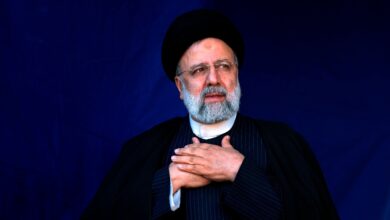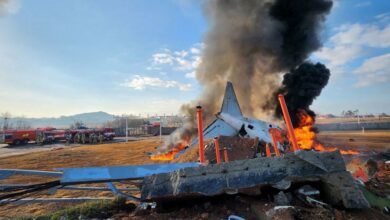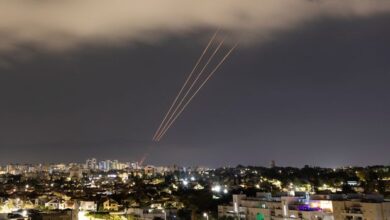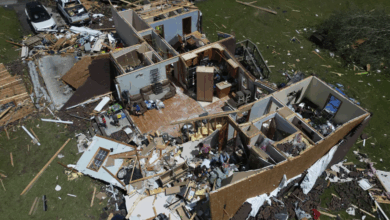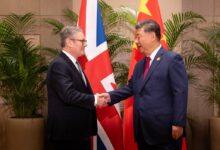Chinese Military Exercises Near Taiwan: Tensions Rise Amid PLA Maneuvers

In a move that underscores ongoing regional tensions, Chinese Official Media Publishes Video of Military Exercises Around Taiwan. The video, broadcast on multiple Chinese government channels, depicts a series of coordinated maneuvers by the People’s Liberation Army (PLA) aimed at demonstrating China’s military capabilities and readiness.

Details of the Exercises
The video features various segments of military activity, including live-fire drills, naval operations, and aerial sorties. Chinese fighter jets are seen taking off from aircraft carriers, while naval vessels engage in complex formations and missile launches. Ground forces are also shown in amphibious assault exercises, highlighting China’s multifaceted approach to potential conflict scenarios involving Taiwan.
🇨🇳China has released new footage of military exercises near Taiwan. Initially, it was announced that the maneuvers would end on August 7, but later the exercises were extended until August 15. pic.twitter.com/WJVodu4ck7
— ☦️Jacob🇷🇺Charite☦️ Иагов (@jaccocharite) August 8, 2022
The Chinese People’s Liberation Army persists in conducting land, sea, and air exercises initiated on Thursday in proximity to the self-governed island( Taiwan).
Political Context
This display of military strength comes at a time of heightened tensions between China and Taiwan. The Chinese government views Taiwan as a breakaway province that must be reunified with the mainland, by force if necessary. Taiwan, however, considers itself a sovereign state with its own government and constitution.
The release of the video is seen as a direct response to recent political developments, including increased military cooperation between Taiwan and the United States. The U.S. has been vocal in its support for Taiwan’s self-defense capabilities, prompting strong reactions from Beijing.
International Reactions
The international community has reacted with concern to the video. The United States, Japan, and several European nations have reiterated their calls for stability and peaceful resolution of cross-strait issues. U.S. officials have emphasized their commitment to the Taiwan Relations Act, which obligates the U.S. to assist Taiwan in maintaining its defensive capabilities.
Taiwan’s Response
Taiwan’s military has released a series of videos showing how it is responding to China’s exercises.
🇹🇼 Taiwan's military has released a series of videos showing how it is responding to China's exercises. https://t.co/UEtwvqQtFc pic.twitter.com/PSLa3wFBm8
— OSINT Expert (@OsintExperts) May 25, 2024
In Taiwan, the government has condemned the exercises as provocative and destabilizing. Taiwanese defense officials have reassured the public of their readiness to defend the island against any aggression. Taiwan’s military has also ramped up its own drills, focusing on asymmetric warfare tactics and bolstering its missile defense systems.
Future Implications
The video release by Chinese state media signals an ongoing commitment by Beijing to assert its claims over Taiwan. Analysts suggest that such military exercises serve both as a show of force and as a means of domestic propaganda to bolster nationalist sentiment within China.
The situation remains volatile, with the potential for miscalculations that could escalate into a broader conflict. Diplomatic efforts continue as stakeholders seek to navigate the delicate balance of power in the Asia-Pacific region.
As this story develops, the world watches closely, recognizing the significant implications for global stability and international relations.
The History of China-Taiwan Relations
The origins of the Taiwan issue date back to the Chinese Civil War (1927–1949) between the Nationalist Kuomintang (KMT) and the Chinese Communist Party (CCP). After the CCP, led by Mao Zedong, defeated the KMT, the KMT retreated to Taiwan in 1949. They established the Republic of China (ROC) government on the island, while the People’s Republic of China (PRC) was established on the mainland.
For several decades, both the ROC in Taiwan and the PRC on the mainland claimed to be the legitimate governments of all of China. However, over time, international recognition shifted predominantly to the PRC. Despite this, Taiwan has maintained its own government, military, and constitution, functioning as a de facto independent state.
Causes of Tensions
The primary cause of tension between China and Taiwan is the fundamental disagreement over Taiwan’s status. The People’s Republic of China (PRC) views Taiwan as a breakaway province that must eventually be reunited with the mainland, even if force is necessary. Conversely, Taiwan operates as a de facto independent state with its own government, military, and constitution, considering itself sovereign. This core political conflict is compounded by the lack of international recognition for Taiwan as a separate country, with most nations, including the United States, adhering to a “One China” policy. This policy acknowledges the PRC’s claim over Taiwan but supports Taiwan’s right to self-defense and maintains unofficial relations with it, causing diplomatic friction.
Military dynamics further exacerbate tensions. China has significantly increased its military capabilities and frequently conducts military exercises near Taiwan, signaling its readiness to use force if necessary. Taiwan has responded by bolstering its defenses, often with advanced weaponry supplied by the United States. This military buildup on both sides creates a constant threat of conflict. Additionally, the complex economic relationship between China and Taiwan adds another layer to the tension. Despite political differences, they maintain strong economic ties, with Taiwan playing a crucial role in global technology supply chains, particularly in semiconductor manufacturing.
Repercussions
The ongoing tension over Taiwan has profound implications for regional stability in East Asia and international relations. China’s aggressive posture and military activities near Taiwan have alarmed neighboring countries, prompting them to enhance their military preparedness and strengthen alliances. This includes the U.S.-Japan Security Alliance and the Quadrilateral Security Dialogue (Quad) involving the U.S., Japan, India, and Australia, all aimed at countering China’s influence.
On a global scale, the Taiwan issue is a central element in U.S.-China relations. The United States’ commitment to the Taiwan Relations Act, which mandates helping Taiwan defend itself, often leads to diplomatic clashes with China. Any potential conflict over Taiwan could disrupt global supply chains, especially in the technology sector, given Taiwan’s dominance in semiconductor manufacturing. Such a disruption would have far-reaching economic consequences worldwide.
Moreover, the Taiwan situation heightens the risk of a broader regional or even global conflict. A military confrontation over Taiwan could draw in major powers, destabilizing the entire region. The geopolitical significance of Taiwan also extends to cybersecurity threats, with Taiwan frequently targeted by cyberattacks, often attributed to China. Escalating tensions could amplify these cyber threats, potentially impacting critical infrastructure globally. Thus, the Taiwan issue is not only a regional concern but also a significant factor in global security and economic stability.
Taiwan is a Volatile Geopolitical Flashpoint
The Taiwan issue remains one of the most volatile and sensitive geopolitical flashpoints in the world. The historical roots of the conflict, coupled with contemporary political, military, and economic factors, create a complex and precarious situation. The repercussions of any conflict over Taiwan would be profound, affecting regional stability, global economic systems, and international security. As such, maintaining peace and stability in the Taiwan Strait is of paramount importance to the global community.
Read More:
ICC Seeks Arrest Warrants for Sinwar and Netanyahu Over War Crimes
Iranian President Ebrahim Raisi Dies in Helicopter Crash at 63
Heavy Rainfall Sweeps Through UAE and Oman
